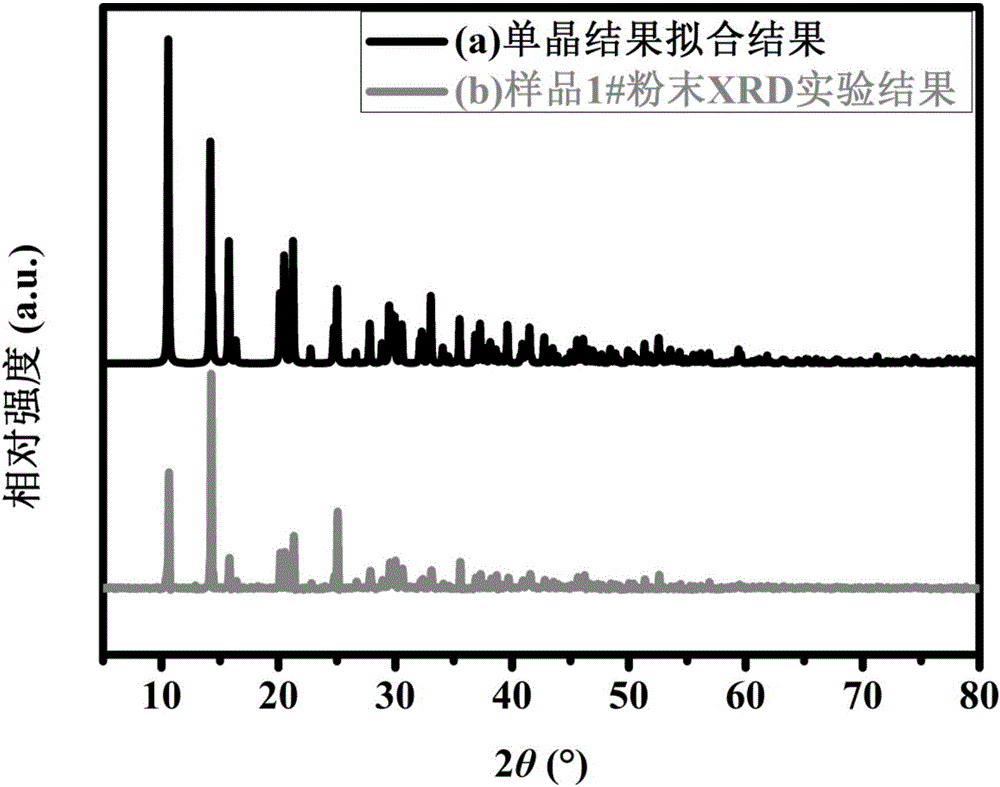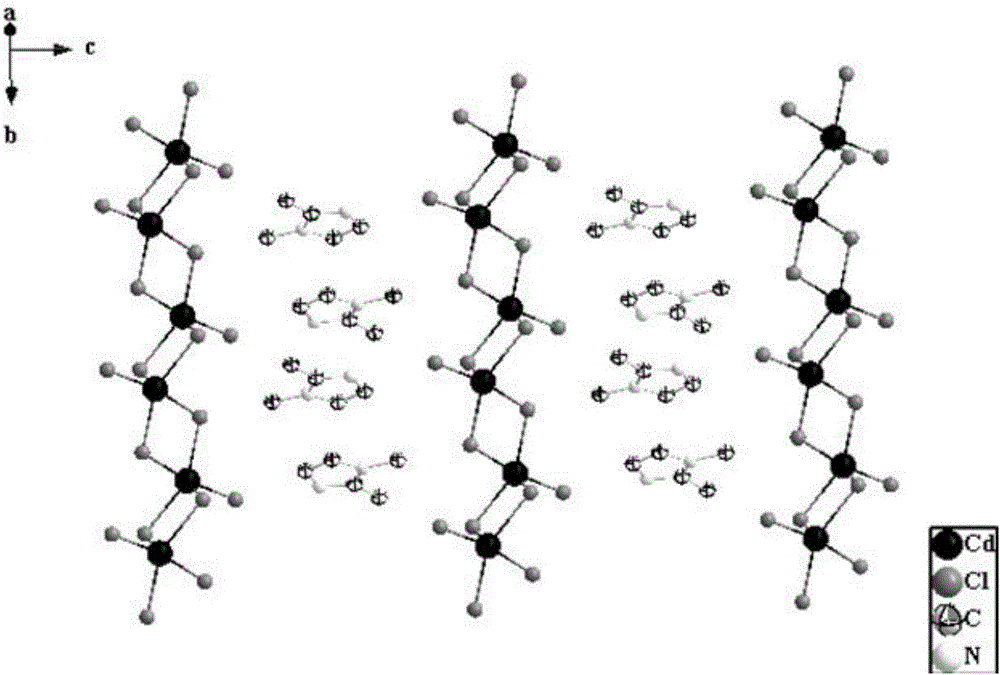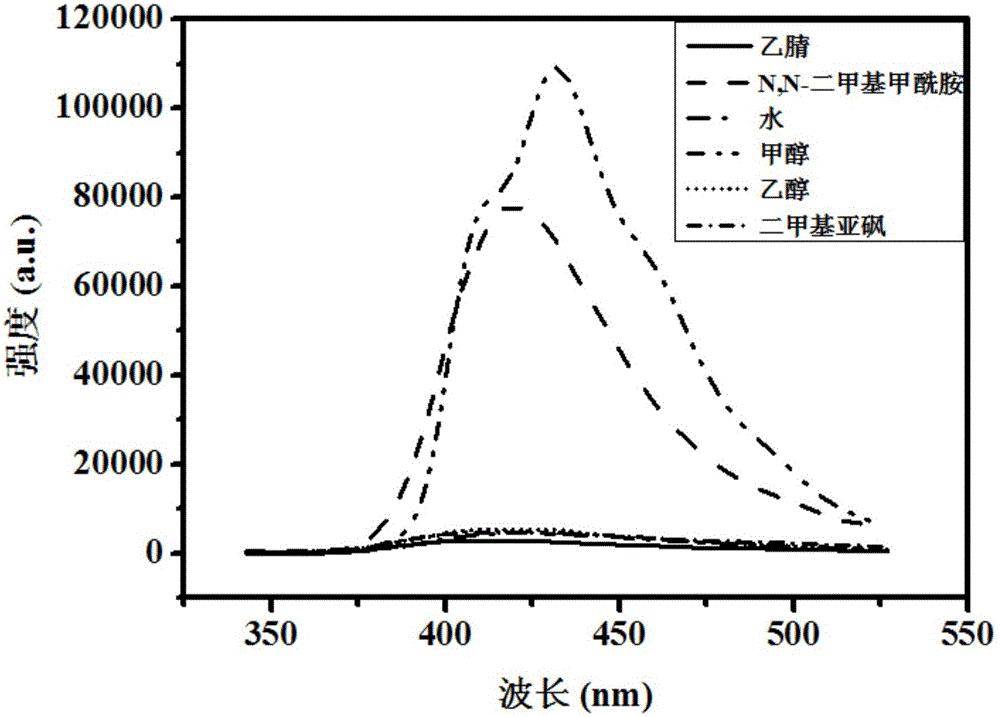Preparation method of 1, 2-dimethyl imidazole cadmium chloride perovskite material and application
A technology of dimethylimidazole and crystal materials, applied in organic chemistry methods, chemical instruments and methods, and 2/12 group organic compounds without C-metal bonds, etc., can solve the problem of preparation methods that have not been reported and systematic research on fluorescence properties Less problems, to achieve the effect of simple method and mild conditions
- Summary
- Abstract
- Description
- Claims
- Application Information
AI Technical Summary
Problems solved by technology
Method used
Image
Examples
Embodiment 1
[0028] Example 1 sample preparation
[0029] Mix 1,2-dimethylimidazole, cadmium source, formic acid, hydrochloric acid, and methanol in a certain proportion to obtain a precursor solution, add the precursor solution into a 20mL test tube, volatilize at the crystallization temperature for a period of time, filter, Washed and dried to obtain a colorless block (C 5 N 2 h 9 )CdCl 3 crystal sample. Table 1 shows the relationship between the types and proportions of raw materials in the precursor liquid mixture, crystallization temperature, crystallization time and sample numbers.
[0030] Table 1 Relationship between sample synthesis conditions and sample numbers
[0031]
Embodiment 2
[0032] The crystal structure analysis of embodiment 2 sample
[0033] The structures of samples 1# to 10# were analyzed by single crystal X-ray diffraction and powder X-ray diffraction.
[0034] The single crystal X-ray diffraction was performed on a Rigaku Mercury CCD type X-ray single crystal diffractometer from Bruker, Germany. The crystal size is 0.12×0.10×0.12mm 3 ; The data collection temperature is 293K, and the diffraction light source is Mo-Kα ray monochromated by graphite The scanning method is ω-2θ; the data is processed by the Multi-Scan method for absorption correction. Structural analysis was completed using the SHELXTL-97 program package; the position of the heavy atom was determined by the direct method, and the coordinates of the remaining atoms were obtained by the difference Fourier synthesis method; 2 The full-matrix least-squares method was used to refine all atomic coordinates and anisotropic thermal parameters.
[0035] Powder X-ray diffraction wa...
Embodiment 3
[0043] Embodiment 3 fluorescence test experiment and result
[0044] The fluorescence test experiment of sample 1# is specifically as follows: Use QM / TM fluorescence spectrophotometer to measure the fluorescence excitation and emission spectra of the solution in which sample 1# is dissolved, dissolve sample 1# and respectively in the above solvent, and make 1mg / 3ml solution, under the excitation of 315nm light, the emission spectra of different solvents were measured. Select a solution with N,N-dimethylformamide as a solvent as a typical representative, add 60 μL of acetonitrile, and measure the change of fluorescence intensity at different addition times.
[0045] Test results such as image 3 and 4 Shown, indicating that the compound (C 5 N 2 h 9 )CdCl 3 Crystals have strong fluorescence in solution, and acetonitrile has a fluorescence quenching effect on sample 1# solution.
PUM
 Login to View More
Login to View More Abstract
Description
Claims
Application Information
 Login to View More
Login to View More - R&D
- Intellectual Property
- Life Sciences
- Materials
- Tech Scout
- Unparalleled Data Quality
- Higher Quality Content
- 60% Fewer Hallucinations
Browse by: Latest US Patents, China's latest patents, Technical Efficacy Thesaurus, Application Domain, Technology Topic, Popular Technical Reports.
© 2025 PatSnap. All rights reserved.Legal|Privacy policy|Modern Slavery Act Transparency Statement|Sitemap|About US| Contact US: help@patsnap.com



